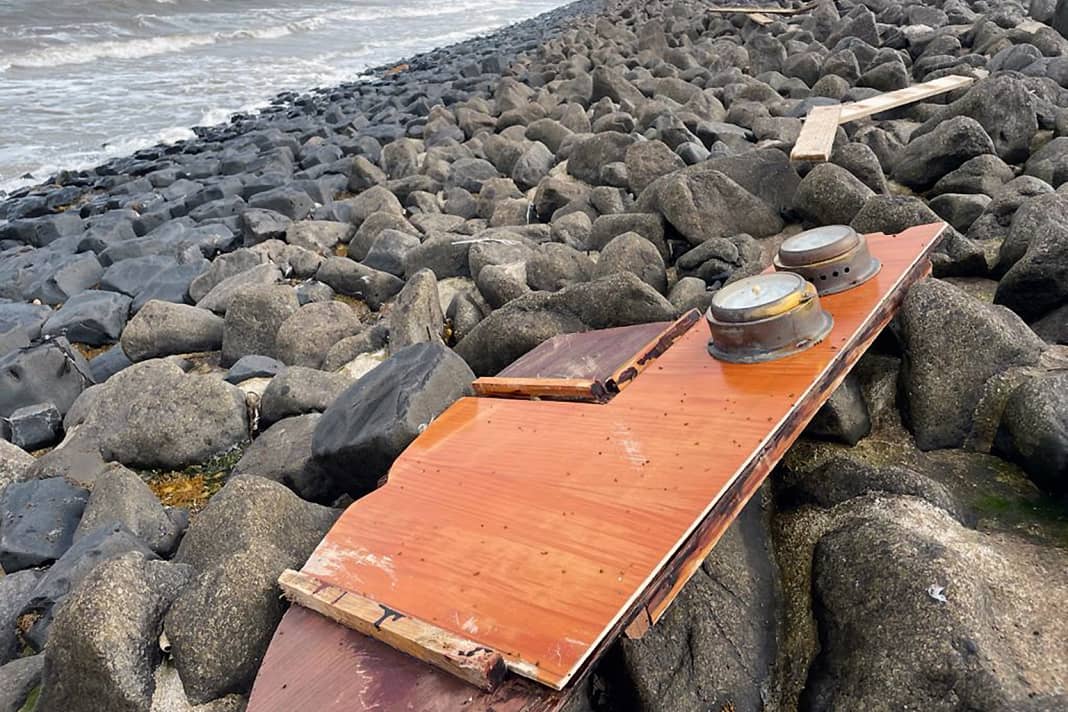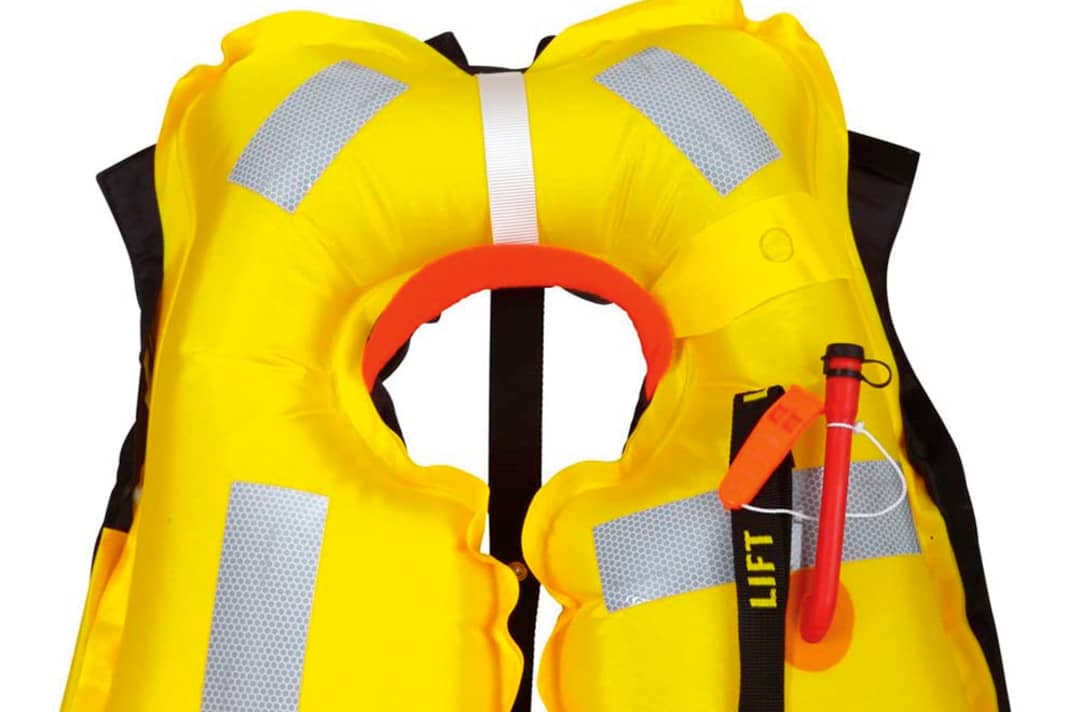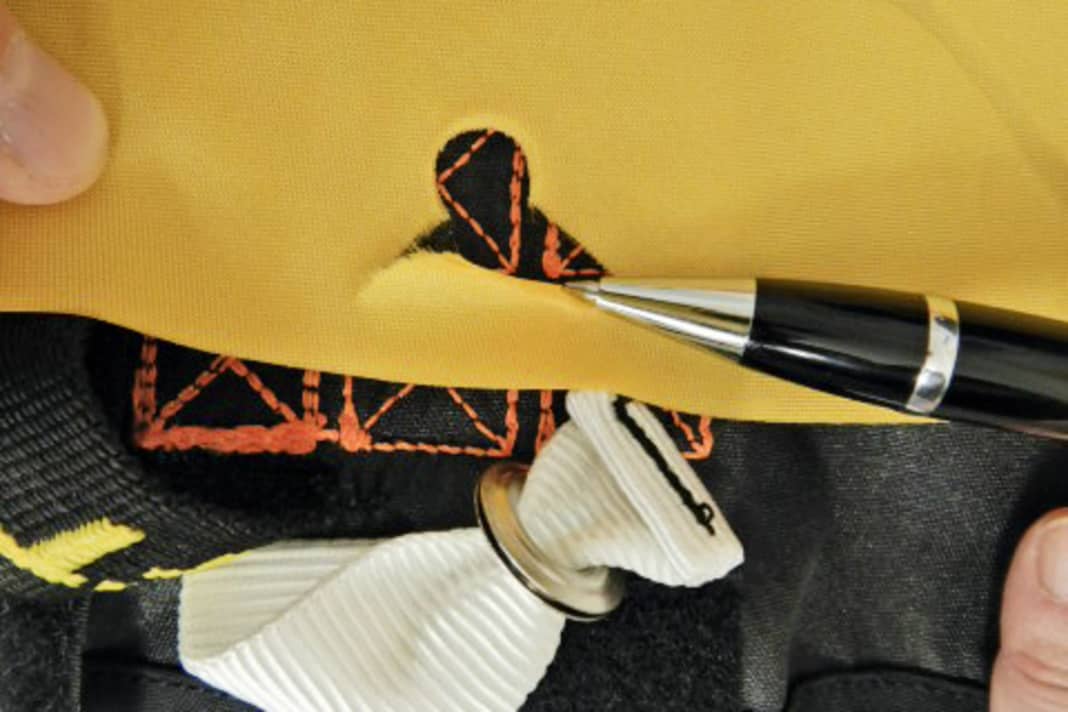Maritime accident: BSU publishes report on the tragedy of the "Silja" crew




In this article:
26 August 2021 is a warm summer's day. The sun is shining and late in the afternoon it is still a pleasant 20 to 22 degrees Celsius on the North Sea coast. Visibility is good. Three young sailors, all in their early 20s, are on their way from Juist to Langeoog on the Silja. The trio will be sailing together along the East Frisian coast for a whole week. The wind finder app had forecast northerly winds of 6 Beaufort for the day, gusting to 7 Beaufort, and the seven-metre GRP centreboard glides through the water at a good six knots. They are sailing in the first reef, the headsail is not fully unfurled. "We had fun," remembers the sailor. And the skipper later says that he felt "quite safe". After all, it wasn't the first time he had been sailing in the Wadden Sea. And he also had a recreational boating licence (SBF).
However, one of the three will not survive the trip. His body has still not been found. It was shortly before 6 p.m. when the yacht capsized at low tide on the bar south of the approach to the Accumer Ee estuary. All three go overboard. Half an hour later, the "Silja" has sunk. Only then can the skipper make an emergency call with his waterproof smartphone, using the very last of the phone's battery power. There was no radio on board, no distress signalling equipment and no lifelines.
Several ships and helicopters in rescue operations
An elaborate Rescue operation starts, four DGzRS ships and several helicopters are involved. Nevertheless, two of the three crew members were only discovered and rescued by a helicopter four hours later, shortly after sunset. All help came too late for the third sailor: while trying to pull him into a boat, he sank to the seabed "like a stone" before their eyes, according to the sea rescuers. He had probably already drowned by then - despite his lifejacket.
Federal Bureau of Maritime Casualty Investigation publishes report
The Federal Bureau of Maritime Casualty Investigation (BSU) conducted an intensive investigation into the tragedy and has now published an almost 140-page report. Marine accidents involving private pleasure craft are not normally investigated by the BSU - even if people die in the process. Unless, of course, the findings are likely to contribute to the general safety of shipping.
"The boat capsized due to short, steep waves," the report states. Opposing wind seas of up to two and a half metres in height had formed on the bar due to the outgoing tidal current and the strong, gusty and above all onshore wind. It is very likely that there were also ground swells, i.e. water waves that form in shallow coastal waters during strong swells. They mainly form when, as here, the wind is against the current. The risk of capsizing is then particularly high. "What do we do if the boat capsizes?" the co-sailor had asked earlier. "It won't capsize," the skipper had replied, she recalls.
- Here you will find the BSU's investigation report on this case
- Here you will find the summary " Lessons learnt ". The publication is based on a resolution of theInternational Maritime Organisation from the year 2018.
Wreckage of the yacht "Silja" landed in fishing nets and on the island of Baltrum
"The waves were faster than the boat," continues the BSU's investigation report. The yacht surfed the waves for a short while, but "Silja" almost came to a standstill in the wave trough. "The boat was almost impossible to steer at that moment." In the fourth wave, the ship luffed to port and got out of control. It capsized with the breaking wave, the mast broke and the boat filled with water. Some of the ship's wreckage later landed in the nets of a fisherman and also on the island of Baltrum.
According to the BSU, the boat capsized at 17:49, at 18:27 an "unintelligible" distress call reached the East Frisia Regional Co-operative Control Centre, and at 18:54 the first rescue boat set sail from Baltrum because "it was possible that 'Accumer Ee' could be heard from the distress call".
However, the casualties are very difficult to find in the stormy weather in the evening: "We get so much water on the windows that we have to make observation stops," can be read later in the mission report of the "Secretarius". "We zigzag our way along the Accumer Ee to the A2 buoy. We can only guess where it makes sense to search because the location of the accident is unknown. Dusk begins to fall and the height of the waves makes it increasingly difficult to see anything."
What had an influence on the accident?
In the opinion of the BSU, neither the manoeuvres nor the size of the boat had a significant influence on the accident. However, poor planning, a lack of experience and a lack of equipment did.
The skipper was already "surprised" by the capsizing of his boat; he had no idea of the dangers of sailing at sea. And therefore had not prepared for it. In hindsight, he says later, he was "amazed" that ground seas and sea races were not training topics when he completed his SFB See in 2017. The following year, he sailed from Emden to Langeoog on the "Silja" for the first time, even working as a sailing instructor on the island and living on the ship in the meantime.
He had also already sailed the Accumer Ee in 2018. Nevertheless, he had ignored sea handbooks and sailing guides when planning his route on the day of the accident. In fact, he hadn't even converted his chart course to a magnetic compass course - he had the NV Charts app on his mobile phone and a paper chart on board. Only two questions played a role in his planning: Will I arrive in daylight? Do I always have enough water under the centreboard?
A fatal overconfidence
As far as wind speed was concerned, he had set himself a limit of 30 knots - i.e. 7 Beaufort. A fatal overestimation of his own abilities in the sea. He knew that he had to sail against the current in the Accumer Ee, but he thought he could compensate for this with the northerly wind. Another avoidable mistake that was to take tragic revenge. And he was the only one on board who could really sail: another problem.
"The criteria 'wind against current' and 'more than two hours after high tide' alone should have led to this planning being rejected as unsuitable if the relevant information had been available," summarises the BSU. The skipper's planning, on the other hand, assumed that the Accumer Ee would only be passed one hour before low water. The BSU now recommends changing the examination requirements for the SBF See to better prepare sailors for such situations.
If the skipper and his co-sailor had not been wearing life jackets, they would probably have drowned too, according to the BSU. But they were lucky. Very lucky, in fact. Because the waistcoats they were wearing turned out to be unreliable.
But above all, if they had at least had pyrotechnics on board, an emergency beacon or even a VHF radio, the rescuers would probably have found them much sooner. As for the deceased co-sailor, according to a forensic medical report, he was "in all probability" so weakened by hypothermia that he drowned. He had already become wet before capsizing due to overflowing water, was freezing due to a lack of suitable windproof and waterproof sailing clothing "and therefore possibly had less chance of survival".
The limits of security- Report on the function of the lifejackets



The "Silja" crew wore waistcoats, but they could not withstand the strain in rough seas
In addition to the crew's nautical failings, the report by the Federal Bureau of Maritime Casualty Investigation also addresses the function of the lifejackets. The three lifejackets worn by the skipper and crew members were so badly damaged during the capsizing and rescue that they could no longer fulfil their function. The investigation could not conclusively determine whether this was the cause of the death of one of the sailors, but the damaged waistcoat certainly did not prolong his life.
When the boat capsized, all three sailors went overboard and their automatic waistcoats were triggered. While the male sailors were able to quickly reach the stern of the "Silja", which was drifting up the keel, and cling to it, the female sailor struggled with the swell and lines that had been washed overboard. According to her statement, the buoyancy chamber of her waistcoat was already pressing against her head at this point, and shortly afterwards the bladder floated next to it. Despite this, she managed to reach the stricken boat and was also able to hold on to the stern area. As the accident progressed, the three of them were washed over several times by large seas, which even righted the "Silja" before the yacht finally sank. According to the skipper, the buoyancy devices of all three waistcoats were no longer in the correct position in front of the chest at this point, but were hanging next to the heads of the crew floating in the water.
Almost three hours passed between the distress call and the "Silja" being located
The female sailor finally placed both arms over the bladder hanging loosely from her waistcoat and clung to it, which probably saved her life. The second crew member was less fortunate, the man had already lost consciousness and could not be rescued later.
The sailors battled with the elements and the waistcoats for an hour and a half before the first rescuers arrived, but they did not notice them due to the vague position information and the weather conditions, which meant that more time passed before they were actually rescued. Almost three hours passed between the mangled mobile phone distress call and the first person being located by the crew of the rescue cruiser "Eugen".
Protocol of the sea rescuers
The sea rescuers recorded that the buoyancy chamber of the lifejacket was already over the head of the person described as lifeless and tore off the waistcoat completely during the recovery attempt. The body of the sailor then sank into the sea and only the torn off buoyancy chamber could be recovered. According to the BSU report, the sailors were wearing Secumar Ultra automatic waistcoats with the crotch straps fastened. The waistcoats correspond to the 150 Newton class and appear to have deployed correctly. In the course of the accident, the lower attachment of the buoyancy compensator broke off on all three waistcoats. In the case of the skipper's waistcoat, at least one of the two connections was still intact after the rescue.
Damaged in this way, the buoyancy chamber folds upwards in the water and can no longer fulfil its function. The lifejackets and the recovered buoyancy chamber were seized by the water police and examined by Secumar as part of the BSU investigation. The problem was that although all three lifejackets were affected in the same way, the damage pattern could hardly be reproduced by the manufacturer.
Scenario from the investigation report does not match the events described
According to the investigation report, the connection only broke when the waistcoat was pulled as if the buoyancy compensator was gripped in the neck area and a person was pulled out of the water by it. A scenario that, as the BSU itself notes, hardly matches the events described by the casualties and rescuers. All other attempts led to different damage patterns. The question of exactly why the waistcoats failed remains unanswered by the BSU investigation.
In a written statement, Secumar Managing Director Benjamin Bernhardt suspects that the damage occurred when the three sailors clung to the stern of the "Silja" and were pushed under the hull several times by the waves, which were up to three metres high, possibly causing the buoyancy bodies to get caught on the stern. The skipper's description fits in with this: "It felt as if my entire body weight was hanging from my hand." A load of 0.82 kilonewtons on the waistcoat is quite realistic, as was the case with the tear-off in the laboratory test.
40 tensile tests carried out with various combinations
On possible changes to the construction of the waistcoats, Bernhardt writes: "We have now carried out over 40 tensile tests with various combinations of material, belt guide, thimbles, fastenings and reinforcements. The fact is that the connections with thimbles can already withstand more than some of the textile fabric on the surface. For example, if the direction of pull is changed only slightly, the retaining straps can tear off at the connection to the protective cover." This can also happen if a loop is passed around the float, even with significantly less force than is required to tear a thimble out of the material. Bernhardt continues: "We have also tested alternative forms of float fastening. In some cases, even the buoyancy was damaged and leaked."
In fact, the design of the waistcoats has been tried and tested for many years and complies with the applicable standards. What's more, they are also used on Solas-compliant models. As part of the approval process, these commercial marine waistcoats have to withstand a three metre jump with inflated buoyancy. During this shock test, the construction is subjected to such stress that the bladder sometimes leaks. According to Bernhardt, however, the retaining straps have never broken or torn out of the buoyancy chamber.
So it remains to be said: Without the lifejackets, none of the three sailors would most likely have survived. However, even high-quality lifejackets cannot offer one hundred per cent safety. Especially as it is almost impossible to foresee all possible stress scenarios in an emergency at sea. However, additional equipment such as signal lights increase the chances of localisation and a successful rescue.
The damage could be recreated in the laboratory, not explained




10 tips on how to safely navigate through sea tides
The straits between the East Frisian Islands, which are clearly recognisable on the map, can prove to be extremely treacherous. Each one also has its own special features. However, according to the BSU, it is currently "only possible for water sports enthusiasts to find reliable information for navigating in the shipping lanes with considerable effort". The authority therefore recommends the following:
- Always sail with the tidal current.
- If you want to sail round the outside of an island, plan both Gatt passages carefully.
- Do not navigate in the dark or in difficult visibility conditions.
- In principle, every sea channel should be navigable in moderate, onshore winds of 3 to 4 Beaufort and the associated swell with incoming water and more than half tide. Exception: A high swell has formed.
- Always avoid the constellation of current against wind! From a wind force of 5 Beaufort it can be dangerous for sailing yachts.
- Pass the barre - a sand or mud bank - at high tide (plus/minus two hours).
- Always manoeuvre within the buoyed fairway.
- A sailing boat should only sail into a sea anchorage under sail if there is sufficient space to leeward at all times.
- When sailing downwind, if possible only sail under headsail to reduce the risk of jibing and windward yaw.
- An engine - if available - should always be ready to start or even be running to keep the boat on course or to manoeuvre it out of a sudden dangerous situation.


